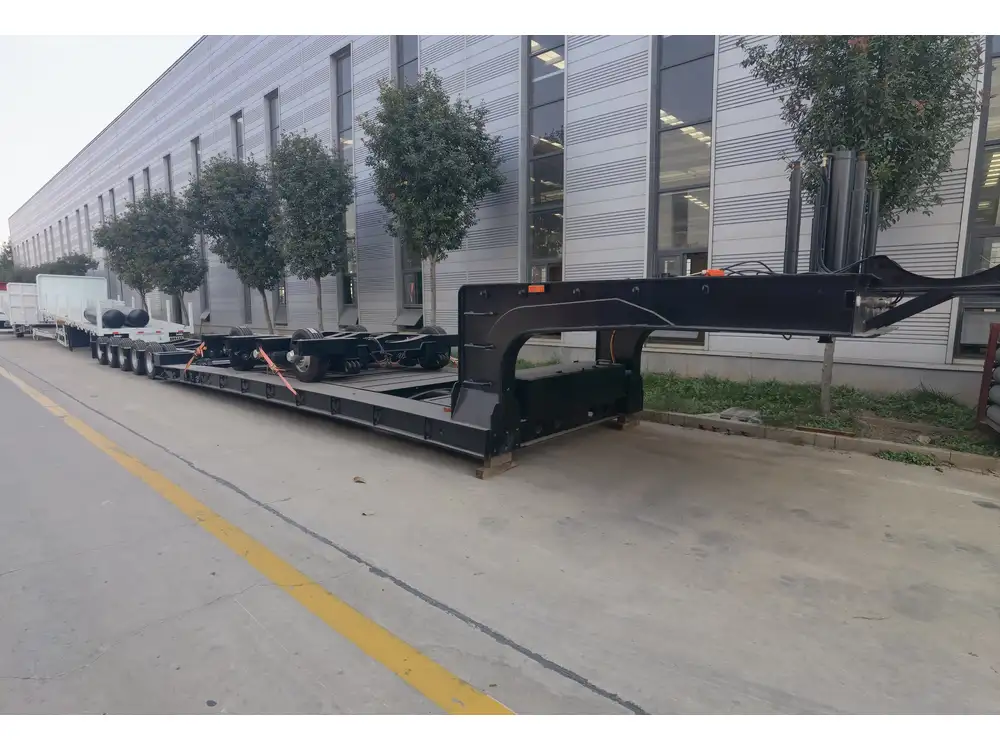When considering the logistics of transportation, one of the most frequently asked questions regarding semi-trailers pertains to their dimensions. The length of a semi-trailer is crucial not only for compliance with legal regulations but also for maximizing the efficiency and safety of freight operations. Below, we delve into the various aspects governing the length of semi-trailers, sorted by type, usage, and regulatory standards.
1. What Determines the Length of a Semi-Trailer?
1.1 Regulatory Standards
The length of a semi-trailer is significantly influenced by regulations that vary depending on the region in which the trailer operates. In the United States, for instance, the Federal Highway Administration (FHWA) sets specific limits, while individual states may enforce additional restrictions. Common regulations include:
| Type of Vehicle | Maximum Length (USA) |
|---|---|
| Single semi-trailer | 48-53 feet |
| Double semi-trailer | 28.5 feet for each unit |
| Freight trains (tandem) | 65 feet |

1.2 Design and Construction
The design of a semi-trailer can impact its length. Common types of semi-trailers include:
- Standard Dry Van Trailers: Typically range from 48 to 53 feet in length, offering ample space for shipping common consumer goods.
- Flatbed Trailers: These trailers are usually about 48 feet long but can be designed up to 53 feet, facilitating the transportation of oversized or irregularly shaped cargo.
- Reefer Trailers: These temperature-controlled trailers generally match standard dry van dimensions, primarily reaching lengths of 40 to 53 feet.
1.3 Intended Use
The purpose of the semi-trailer also plays a pivotal role in defining its length:
- General Freight: A standard length of 53 feet allows efficient transport solutions for most goods.
- Specialized Transport: Certain industries, such as automotive or heavy machinery, may utilize specialized trailers, which can vary significantly in length based on load requirements.
2. Choosing the Right Length for Semi-Trailers
Selecting the appropriate length for a semi-trailer involves various considerations related to logistics needs and operational efficiency.

2.1 Cargo Type
Understanding the type of goods being transported can enhance decision-making regarding trailer length. For instance:
| Cargo Type | Recommended Trailer Length |
|---|---|
| Standard Consumer Goods | 53 feet |
| Heavy Equipment | 48 feet or custom sizes |
| Refrigerated Goods | 53 feet |
2.2 Weight Restrictions
Weight limits imposed by law often go hand-in-hand with length. Most states enforce a Gross Vehicle Weight (GVW) limit of 80,000 pounds, which can impact load capacity based on trailer length.
2.3 Maneuverability Needs
Shorter semi-trailers may offer enhanced maneuverability, which is particularly beneficial for urban deliveries or operations that require frequent turns and lane changes. However, longer trailers tend to maximize load capacity per trip, balancing trade-offs in efficiency.

3. Industry Trends Influencing Trailer Length
3.1 Evolution of Transportation Needs
As commerce increases and the global trade dynamics shift, the demand for more efficient shipping solutions is escalating. Some trends influencing semi-trailer lengths include:
- E-commerce Growth: Rapid increase in online shopping requiring larger trailers for efficient distribution.
- Sustainability Initiatives: Shorter, lighter trailers may become relevant for reducing carbon footprints in transport operations.
3.2 Advances in Technology
Technological advancements in trailer design and materials have permitted semi-trailers to be both lighter and stronger, allowing for efficient payload management without compromising on size.

4. Legal Considerations and Compliance
Transportation companies must be acutely aware of the legal ramifications surrounding semi-trailer lengths.
4.1 State-Specific Regulations
Compliance with both federal and state regulations is essential. Key factors include:
- Permits for Oversized Loads: Transporters may require special permits when moving longer loads, which adds to operational complexities.
- Interstate Variability: Rules can vary greatly from one state to another, thus necessitating constant vigilance for operators working across state lines.
4.2 Compliance with Road Safety Standards
The National Highway Traffic Safety Administration mandates that semi-trailers meet specific safety standards that include effective braking systems and lighting requirements. Abiding by these regulations often hinges on the trailer’s design and length.

5. FAQs: Common Questions about Semi-Trailer Lengths
5.1 What is the maximum legal length of a semi-trailer in the USA?
The legal maximum length for a semi-trailer, as set by federal laws, is 53 feet. However, this can vary slightly depending on state regulations.
5.2 Can I use a longer trailer for transport?
While longer trailers may provide additional cargo space, they must comply with local laws. Oversized permits may be required to transport beyond standard legal limits.

5.3 How does trailer length affect fuel efficiency?
Length impacts aerodynamics. Generally, shorter trailers provide less wind resistance, but longer trailers can offer better fuel efficiency compared to taking multiple shorter trips by consolidating loads.
5.4 What is the average length of a semi-trailer?
The average semi-trailer length commonly used in commerce today ranges between 48 to 53 feet, with 53 feet being the most prevalent choice for transporters.
6. Conclusion: Making an Informed Decision
In conclusion, understanding the complexity surrounding the length of semi-trailers requires a multi-faceted approach. Variables such as regulatory aspects, cargo type, maneuverability, and advances in technology all contribute to the decision-making process. As the transportation landscape continues to evolve and adapt, staying informed about these factors is critical for manufacturers, transport companies, and logistics professionals.
Investing time in this knowledge not only facilitates compliance with laws but also enhances overall operational efficiency. Ultimately, whether you’re embarking on a new transport venture or refining your existing fleet, being equipped with knowledge about semi-trailer lengths will guide more effective decision-making and strategic planning suited to modern logistics demands.



